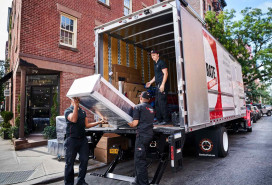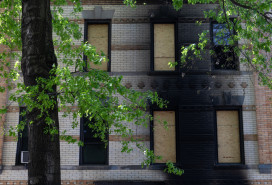Ever wonder why agents don't talk about square footage? Here's why
Anyone who's ever been in the market for a co-op has probably noticed how reluctant a broker can be to offer up the square footage of the unit.
While it's only fair that buyers want to quantify their potential purchases, the broker often is unwilling to -- or at least very cautious -- about giving away those numbers.
In a recent blog post that caught our eye entitled "Fastidious for Footage," Warburg Realty's president, Frederick Peters, shined some light on the tricky topic of co-op (and especially pre-war) square footage.
Here are a few things you may not know:
- Most co-ops were built before square footages were consistently calculated (or calculated at all).
- Appraisers rarely agree on square footage, and frequently diverge by as much as 15% of the total area.
- In the mid-90s a lawsuit changed the practice of throwing around (and inflating) square footage numbers. A buyer, looking to get out of a signed contract, claimed that the seller’s agent had misrepresented the square footage. Appraisers agreed. The Residential Division of The Real Estate Board decided that square footages would not be required on co-op transmissions.
- In the condo and new development markets, brokers are not as afraid to give square footages. The “Schedule A” in the prospectus (available for buildings built from the ground up or rehabilitated within the last 25 years), which every buyer receives, has square footage information for each unit. But it shoud be noted that the numbers are usually based on outside measurements and overstate the usable square footage by some considerable percentage. "My agents and I sometimes joke that the numbers seem to be based on measuring the property from the middle of the street!" writes Peters.
- When dealing with a high-stakes co-op, Peters and his agents will "sit down with a scale ruler and try to measure off the floor plan to arrive at a square footage number. I make certain assumptions: most bathrooms are four feet across, most closets are three feet deep. I leave 6 inches for walls when measuring several rooms together. Hallways can be as narrow as three feet or as wide as five feet. Most importantly, when we come up with a number, we disclaim like crazy. My numbers are usually low compared to those used by others, which makes me feel more comfortable," he writes.
Related posts:
How to make or break your appraisal
Wanna get in on a pre-construction deal? Read this first
My Big Fat Board Interview column
What I learned from 150 apartments before I finally bought one
Here are 7 things your lawyer should tell you when you buy a condo or co-op in NYC (sponsored)
16 things I wish I knew before buying this place
A NYC real estate lawyer reveals the 14 biggest surprises for first-time buyers (sponsored)
Confessions of a preconstruction buyer
The 7 worst places to live in a building
Your next place: 9 questions that separate the New Yorkers from the rookies



























